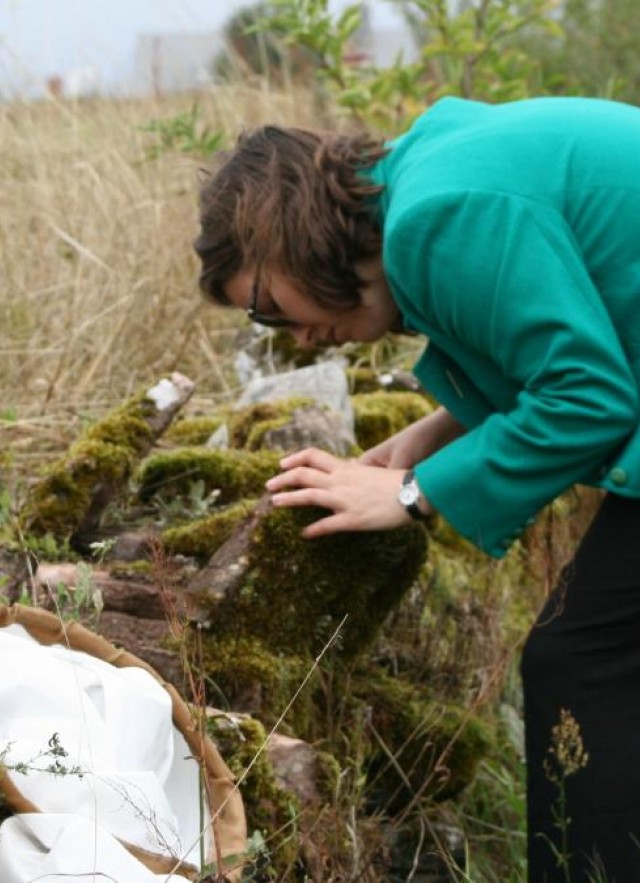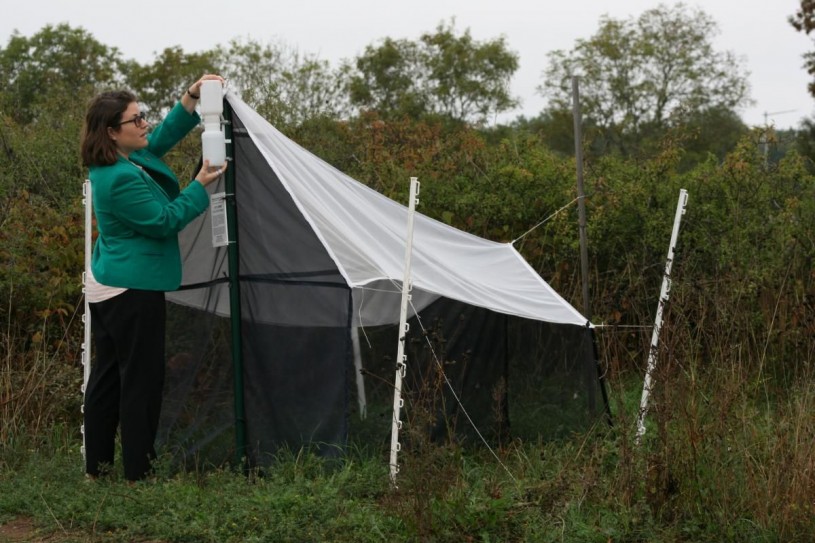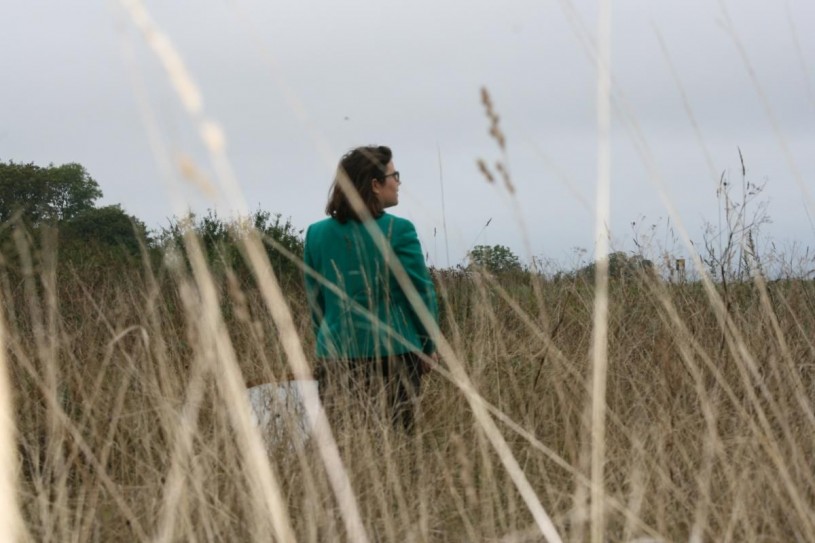
Imagine you are a fly researcher in Los Angeles! The project you have been working on for 3 years is still going strong, but a new gig falls into your lap. There isn't a flyjobs.com out there (OK there is, but it’s a defunct website for airline personnel), but through your entomological network and the prestige you’ve gained from your recent fly publications, you are offered to run a new fly research project. That job just happens to be halfway around the world, researching flies on a small Swedish island in the Baltic. How does one transition from working at one of the world’s biggest natural history museums in one of the world’s largest urban areas to life working at a small research station situated in the European countryside?
I was curious to know the answer, so I asked my friend and former colleague, fly researcher Emily Hartop, to share her experience moving from Long Beach to Vickleby, Sweden. (For some context here, Long Beach has a population of over 470,000 and covers about 51 square miles. Vickleby has a population of about 320 people and is less than a square mile!)
Which part of L.A. did you used to live in, and how long was your commute to the museum?
I was living in Long Beach for a number of years before I moved to Sweden. I took the Blue Line for awhile but it took about an hour and a half each way, so I eventually switched to driving...710 to the 405 to the 110 everyday. It could take 30 minutes early morning, or up to an hour-and-a-half each way with traffic.
Where do you live now, and how do you get to work?
I live on the Swedish Baltic island of Öland, in a small village called Vickleby. I live about 3 miles (7 miles roundtrip) from my work and I walk to and from work most days. It takes about an hour to walk each way, so I haven’t shortened the time of my commute, but there’s no traffic -- just some cows and sheep and beautiful scenery including agricultural fields and a view across the Kalmar sound (the body of water that lies between the island of Öland and mainland Sweden).
How has it been moving from such an urban environment to somewhere so rural?
It has been an amazing experience -- I wasn’t sure how I would adapt but I love the peace and quiet and beauty of this place. Sometimes I miss all the restaurants and coffee shops and museums and things to do that you can find in a big city, but I travel often enough it doesn’t bother me very much to live somewhere where things are simpler. As far as office spaces go, your old lab was in a pretty epic part of the museum (the entomology collection) with about 6 million insect specimens as your officemates.
Can you tell us a bit about the office and lab you’re working in now?
You just can’t beat working at an institution like NHMLAC! It’s amazing! I work in a much smaller place now, at a field station called Station Linné (named after the father of taxonomy, Carl Linnaeus). Our core staff is just a handful of people, but we are home to three research projects, including mine. The big project that is based here is the Swedish Malaise Trap Project (SMTP), an ongoing inventory of the Swedish insect fauna using Malaise traps, the same traps used in NHMLA’s BioSCAN project (see next question). The SMTP started fifteen years ago and they caught so many insects from all over Sweden, they are still sorting them (but they are close to finished now!).

Can you tell us a bit about the fly research you were working on here in Los Angeles?
In L.A. I was part of the staff for the BioSCAN project, NHM’s insect inventory. I helped with the logistics of the project and also did taxonomic work on phorid flies, the specialty of the curator of entomology, Dr. Brian Brown. I worked with him and a British colleague to help describe the (43!) new species the BioSCAN project caught in L.A. What about the fly research you’re working on in Sweden? I am the recipient of a grant from the Swedish Taxonomy Initiative to study the Megaselia (a genus of flies) in Sweden. My goal is to find out what is here and describe all the new species. I am using material from the SMTP’s original collection campaign, but we also have a new campaign that started this year. BioSCAN really inspired me to work with urban environments, and I am happy to report that the new collection phase of the SMTP has a trap on a rooftop right in the middle of Stockholm! We also have a couple traps near industrially disturbed areas, a trap in Umeå city, and several in suburban villages! I can’t wait to see what the diversity looks like in this urban and suburban areas!

How do you expect the results of the Stockholm project will differ/be similar to those from Los Angeles?
The Stockholm trap is just one trap out of several dozen that are spread all across Sweden. I don’t expect us to capture a huge diversity of insects in our rooftop trap, but it will be interesting to see what we get. I hope in the future we will be able to do more sites in urban areas, to get comparative data across cities and suburbs in Sweden. Can you share with us one of your favorite nature encounters/experiences in Los Angeles? Having been away for some time now, this question makes me think of what I miss about L.A.’s nature. I miss coyotes: I absolutely love them and I can remember a number of specific urban encounters with them. I am always blown away by their resilience. I once saw one loping down the street in my neighborhood in Long Beach, a block from the beach in a heavily urbanized area! I also miss raccoons, they are so mischievous and resourceful! Here, raccoons are called tvättbjörn, which literally translates to “wash bear,” I love that! Although native to North America, raccoons were introduced to mainland Europe decades ago -- so I guess I don’t really have to travel far to see some!
How does that compare to your encounters in Ӧland?
In Öland, I live in the countryside so you are surrounded by nature all the time. The fields between my home and work are often full of deer, hares, and even moose (although I have yet to spot one)! The island is world famous with bird watchers as it hosts many migratory birds in spring and fall, as well as many resident birds year-round. The flowers change every week from spring to fall -- it is amazing to watch the seasons bring a constant succession of plants and animals (such a strange and beautiful thing for a native Californian to be experiencing). Everyday in the warmer months, the station staff have our twice-daily “fika” (a Swedish coffee break and social time) and our lunch outside with hundreds of butterflies and bumblebees around us! Last week, I watched a giant hornet attack and eat butterflies in the station courtyard as I ate my lunch! You never have to look very far to see amazing things here.
Let’s talk about the City Nature Challenge. Did you participate in the first City Nature Challenge?
Yes, I contributed a few observations from my neighborhood in Long Beach!
If Stockholm participates in the City Nature Challenge 2019, will you take part?
I mean who can resist Swedish moose, beavers, and 22-spot ladybugs being documented as part of the global challenge? I would certainly love to participate if I am able to be up in the city at that time! (Öland is about 5 hours from Stockholm).
What do you like the most about living and working in Sweden?
Sweden is known for having (and encouraging) a very healthy work/life balance. This is a huge cultural difference from the U.S., and it took a bit of getting used to — but I really enjoy it, it’s a total freedom to go home and forget about work!
What do you miss most about working at the Natural History Museum?
Working at such a big, amazing institution is very inspiring. There are so many people doing innovative and exciting things, and their enthusiasm is contagious! NHM always has things going on -- new exhibits, fun events, I miss that!
What do you miss most about Los Angeles?
Maybe this isn’t the answer you were looking for, but proper burritos and ripe avocados are for sure the things I miss most!
Finally, how do you say "fly" in Swedish?
Fluga is singular, flugor is plural, and puckelflugor = phorids :-)